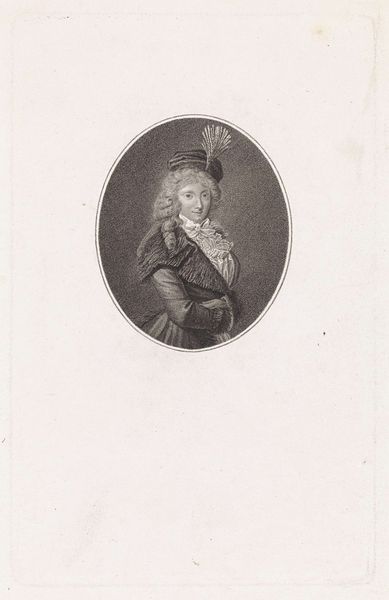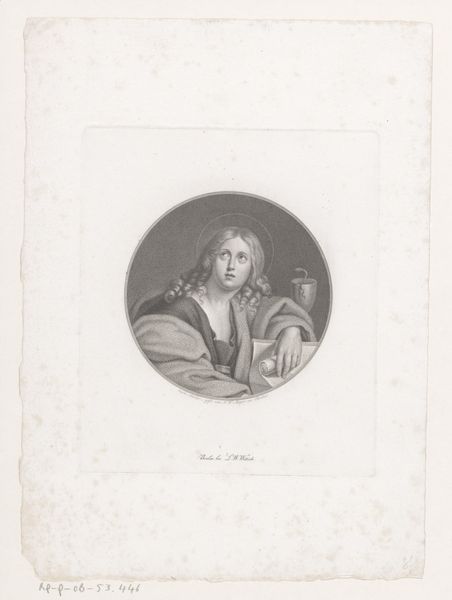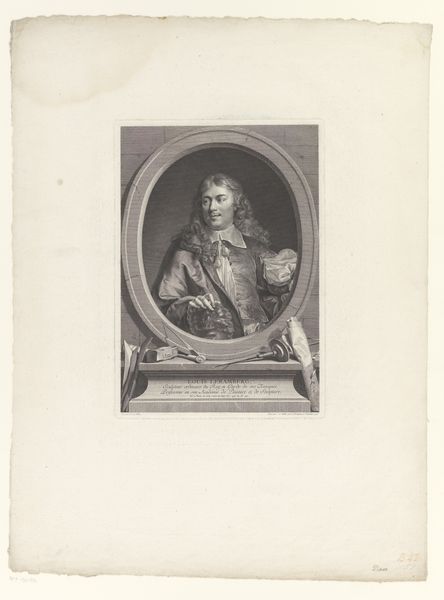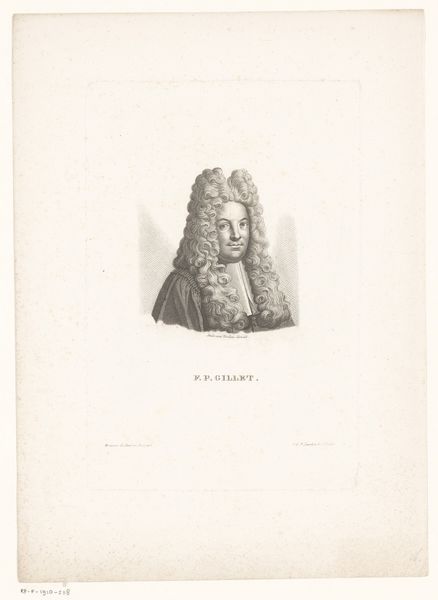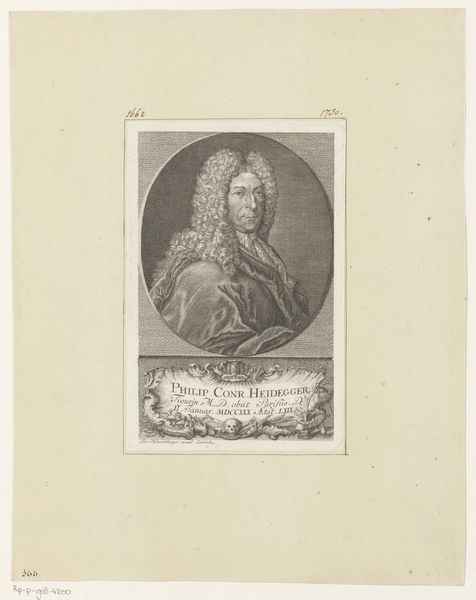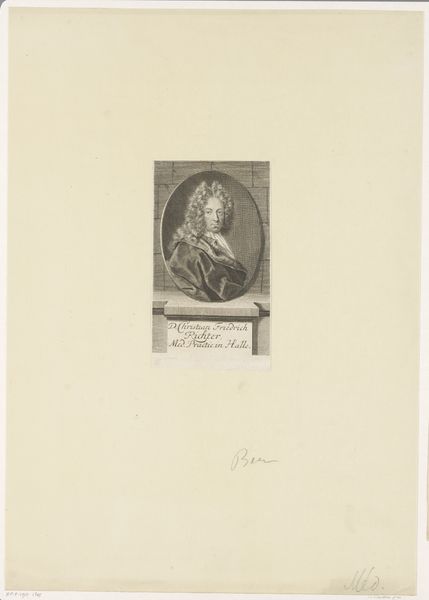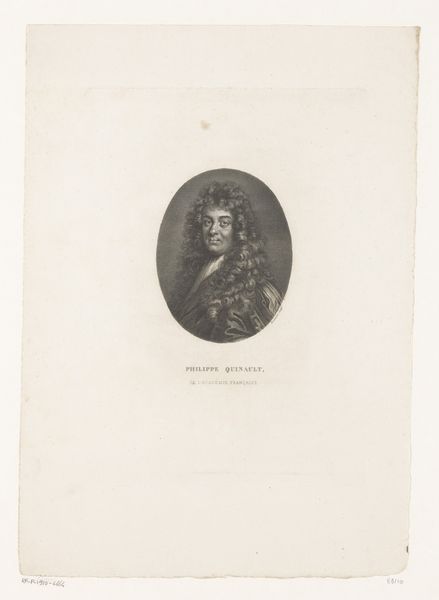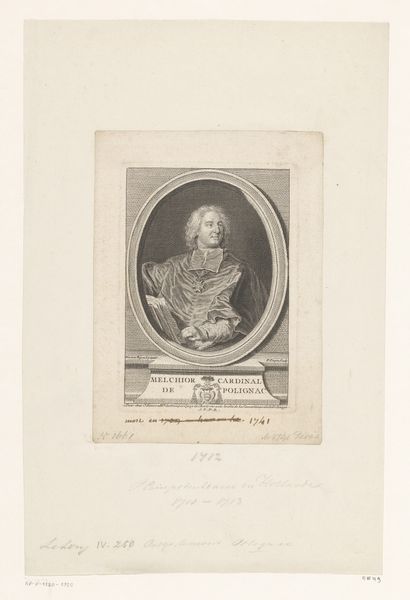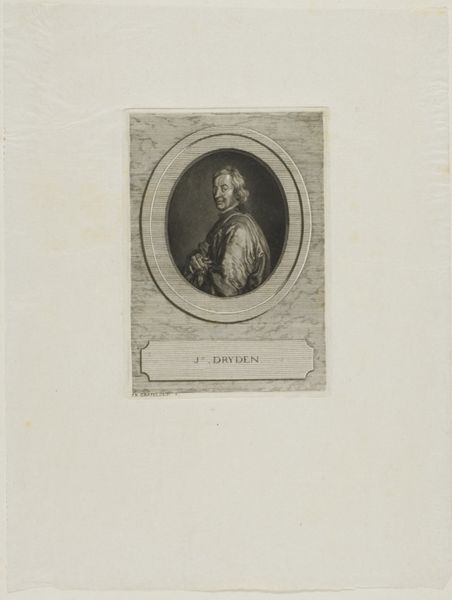
Dimensions: height 351 mm, width 244 mm
Copyright: Rijks Museum: Open Domain
Curator: This is "Portret van Willem III, prins van Oranje," an engraving dating back to 1857, made by Johann Wilhelm Kaiser. Editor: It possesses a somber elegance, doesn't it? The monochromatic tones, combined with that very rigid, formal pose... it speaks to a deep sense of duty and the weight of responsibility, but it looks airless and stiff to my eyes. Curator: Indeed. Let us examine that pose. Notice the subject is framed in an oval, contained and composed. His gaze meets ours directly. The high contrast amplifies details – the elaborate wig, the textures of the lace and metal. One finds a conscious attempt to convey status and control. Editor: Control is a keyword. I look at Willem and immediately think about colonial power, the brutal subjugation of populations and resources justified through Divine Right and notions of national superiority that defined the era. Even here, in the carefully etched lines of an engraving, those power dynamics are baked into the presentation. Curator: A sharp reading! One could argue the portrait conforms to the visual rhetoric employed by many European monarchs of that era, echoing Baroque sensibilities long past, in its theatricality and dramatic use of light and shadow. This links Willem to a tradition of sovereignty. Editor: Yes, the conscious construction of image and legacy. However, let’s not ignore the context of 1857, nearly two centuries after Willem's reign. To what audience is Kaiser appealing with this revival of Baroque portraiture? What ideologies is it intended to reinforce or perhaps, subtly question, so soon after the Dutch constitution? The inclusion of armor indicates his leadership, however what did that mean to people then? Curator: A valid question. Formally, though, observe the delicate use of line and shadow to give depth to the portrait. Note that Kaiser employs sophisticated engraving techniques to create such realistic detail. A real mastery of the craft. Editor: Undeniably. Still, art never exists in a vacuum. And whether intentional or not, an image of power, even in careful monochrome, holds an explosive resonance. Curator: A stimulating insight into the socio-historical layers, thank you. I’ll ponder Kaiser's intent a little longer now, I think. Editor: As will I, perhaps while reassessing how the aesthetic choices reinforce—or perhaps unwittingly critique—dominant narratives. Thank you for highlighting the art.
Comments
No comments
Be the first to comment and join the conversation on the ultimate creative platform.
